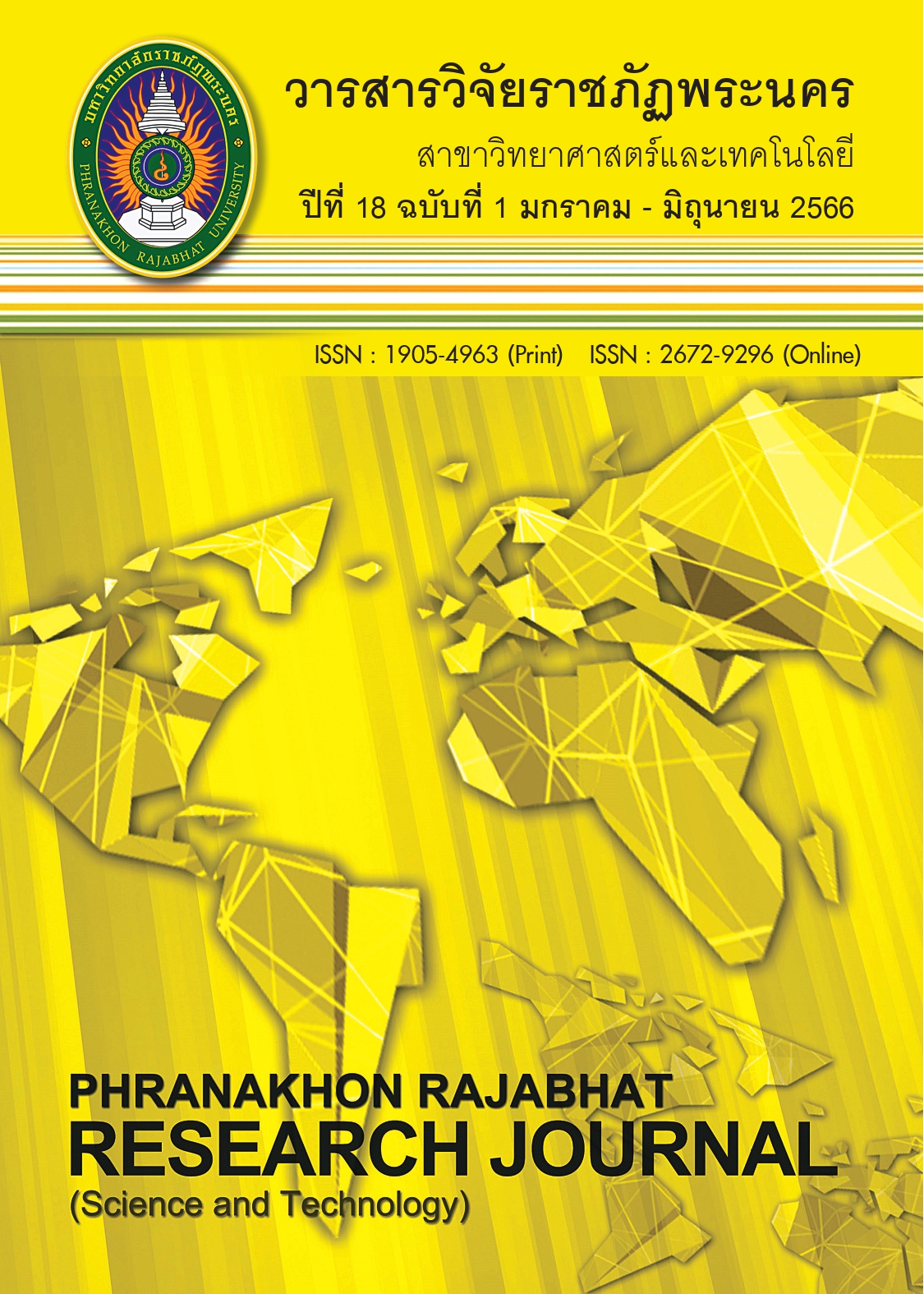SHAMPOO AND LOTION DEVELOPMENT CONTAINING RAMBUTAN SEED OIL
Keywords:
Rambutan seed, Lotion, Shampoo, CosmeticsAbstract
The purposes of this research were to 1) develop a shampoo and lotion formula containing rambutan seed oil, 2) study the physico-chemical properties and test the stability of shampoo and lotion products. Rambutan seeds were ground and extracted by maceration with petroleum ether and then solvent was evaporated. The resulting oil was used in the shampoo and lotion formulation. The oil ratio of 1.00-2.50% was used in shampoo and lotion formula development. All formulas were tested for physical, chemical and stability properties. It was found that the ratio of rambutan seed oil of 2.50% was appropriate in the shampoo formula and 2.00% was appropriate in the lotion formula, because both shampoo and lotion products did not separate. The pH meter showed shampoo pH range 4.36±0.02 - 5.08±0.06 and lotion 4.92±0.01 - 5.03±0.08, which was suitable for skin and hair condition. In addition, the viscosity 1,103.33±13.65 – 1,576.56±7.12 cP for shampoo and 2,245±32.34-2978.02±13.43 cP for lotion is a convenient flow range for use. These data will support and value added for rambutan seed, a waste material in the rambutan processing industry, and also to develop cosmetic products with natural ingredients
References
Chandran, S., Vipin, K.V., Augusthy, A.N., Lindumol, K.V. & Shirwaikar, A. (2013). Development and evaluation of antidandruff shampoo based on natural sources. J. Pharm. Phytother, 1(4), 10- 14.
Darmstadt, G.L., Mao-Qiang, M., Chi, E., Saha, S.K., Ziboh, V.A., Black, R.E., Santosham, M., Elias, P.M. (2002). Impact of topical oils on the skin barrier: possible implications for neonatal health in developing countries. Acta Paediatr. 91, 546–554.
Górnas ́, P., Siger, A., Seglin ̧ a, D. (2013). Physicochemical characteristics of cold-pressed Japanese quince seed oil: new promising unconventional bio-oil from by-products for the pharmaceutical and cosmetic industry. Ind. Crops Prod. 48, 178–182.
Gunstone,F.D, Harwood IL. and Padley,F.B. (1986). The Lipid Handbook Chapman and Hall New York.
Kamolwan Suksawat, Orawan Oupathumpanont, Pitchaon Maisuthisakul and Muanmai Apintanapong. (2016). Effect of fat Extraction Methods on Physico and Chemical Properties of Fat from Rambutan Seed (Nephelium lappaceum L.). The 6th STOU Nation Research Conference. 1-9.
Letawe, C., Boone, M., Pierard, G.E. (1998). Digital image analysis of the effect of topically applied linoleic acid on acne microcomedone. Clin. Exp. Dermatol. 23, 56–58.
Lourith, N., Kanlayavattanakul, M., Mongkonpaibool, K., Butsaratrakool, T., and Chinmuang, T. (2016). Rambutan seed as a new promising unconventional source of specialty fat for cosmetics. Industrial Crops and Products, 83: 149-154.
Lourith, N., Kanlayavattanakul, M., Sucontphunt, A., Ondee, T. (2014). Para rubber seed oil: new promising unconventional oil for cosmetics. J. Oleo Sci. 63, 709–716.
Manaf, Y.N.A., Marikkar, J.M.N., Long, K., Ghazali, H.M. (2013). Physico-chemical characterization of the fat from red-skin rambutan (Nephellium lappaceum L) seed. J. Oleo Sci. 62, 335–343.
Maria Fernanda Reis Gavazzoni Dias, Andréia Munck de Almeida, Patricia Makino Rezende Cecato, Andre Ricardo Adriano,Janine Pichler. (2014). The Shampoo pH can Affect the Hair: Myth or Reality?” International Journal of Trichology 6,3: 95-9.
Mohibbe/M, Wars.A and Nahar NM (2005). Prospects and potential of fatty acid methyl esters of some non-taditional seed oils for use as biodiesel in India. Biomass and Bicenergy. 29, 293-302.
Downloads
Published
Issue
Section
License

This work is licensed under a Creative Commons Attribution-NonCommercial-NoDerivatives 4.0 International License.
โปรดกรอกเอกสารและลงนาม "หนังสือรับรองให้ตีพิมพ์บทความในวารสารวิจัยมหาวิทยาลัยราชภัฏพระนคร สาขาวิทยาศาสตร์และเทคโนโลยี" ก่อนการตีพิมพ์




